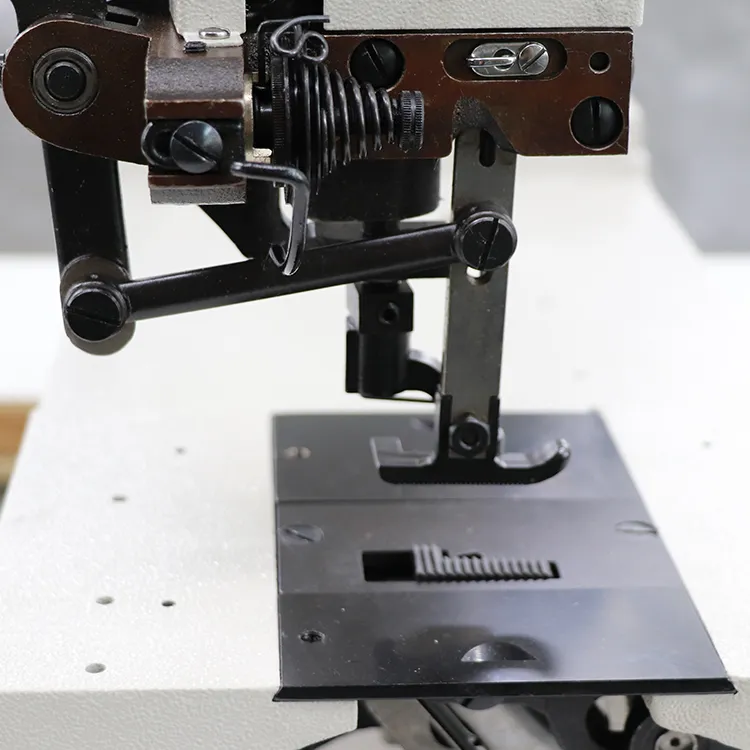fibc safety sewing
Understanding FIBC Safety Sewing Ensuring Quality and Reliability
Flexible Intermediate Bulk Containers (FIBCs), commonly referred to as bulk bags, have revolutionized the way bulk materials are stored, transported, and handled across various industries. While the focus tends to be on the materials these bags carry, it is crucial to understand that the safety and integrity of FIBCs are heavily reliant on the sewing techniques used in their construction. This article sheds light on the essential aspects of FIBC safety sewing.
The Importance of Sewing in FIBC Construction
Sewing is a fundamental process in the manufacturing of FIBCs as it directly influences the bag’s strength, durability, and overall performance. An improperly sewn FIBC can lead to tears, leaks, and failures, compromising the safety of the materials it contains and posing risks to workers who handle these bags. As such, manufacturers must prioritize high-quality sewing techniques to ensure the bags meet safety standards.
Key Safety Sewing Techniques
1. Thread Selection The choice of thread is critical in FIBC construction. Threads must be strong, durable, and resistant to environmental factors such as moisture and UV rays. High-tenacity polyester or nylon threads are commonly used, as they offer enhanced strength and resistance to abrasion and stress.
2. Stitch Type The type of stitch employed can significantly affect the seam’s load-bearing capacity. A double-stitched or reinforced stitch pattern is often recommended for FIBCs that are to carry heavy loads. This not only strengthens the seams but also distributes weight more evenly, reducing the risk of seam failure.
fibc safety sewing

3. Seam Construction The manner in which seams are constructed plays a vital role in the safety of FIBCs. Safety sewing practices often involve using a lock stitch or a chain stitch, which helps secure the edges of the fabric and prevents unraveling. Additionally, employing a seam allowance that accommodates the stress of loading and unloading is essential.
4. Quality Control Continuous quality checks throughout the sewing process are paramount. Manufacturers should implement rigorous inspection processes to identify any defects or inconsistencies in sewing. This includes checking for missed stitches, uneven threading, and overall seam integrity.
Compliance with Standards
FIBC safety sewing is not just about good practices; it is also about compliance with industry standards. Various organizations, such as the International Organization for Standardization (ISO) and the American Society for Testing and Materials (ASTM), have established guidelines for the safe design and manufacturing of FIBCs. Adhering to these standards not only ensures safety but also enhances the credibility of manufacturers.
Conclusion
In conclusion, FIBC safety sewing is an indispensable component in the manufacturing of bulk bags. By focusing on quality threads, proper stitch types, meticulous seam construction, and stringent quality control, manufacturers can significantly enhance the safety and reliability of FIBCs. As industries continue to rely on bulk bags for efficient material handling, the importance of safety sewing will only grow. By maintaining high standards in this aspect of production, stakeholders can ensure not only the protection of their products but also the safety of their workforce and compliance with industry regulations. Prioritizing FIBC safety sewing is a commitment to quality, reliability, and safety in material handling.
-
Industrial Cylinder Arm Sewing Machine: Revolutionizing Heavy-Duty SewingNewsJul.28,2025
-
Cylinder Arm Sewing Machine: Perfect for Special Sewing ApplicationsNewsJul.28,2025
-
Cylinder Bed Sewing Machine: Essential for Sewing Complex MaterialsNewsJul.28,2025
-
Heavy Duty Sewing Machine: The Essential Tool for Industrial ApplicationsNewsJul.28,2025
-
Computerized Pattern Sewing Machine: Revolutionizing Precision StitchingNewsJul.28,2025
-
Heavy Duty Industrial Sewing Machine: Power Meets PrecisionNewsJul.28,2025
-
Leather Sewing Machine: The Industrial Standard for Tough MaterialsNewsJul.18,2025





























